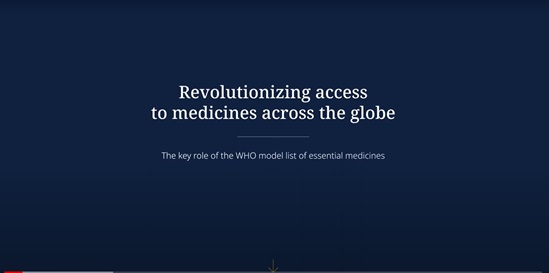Access to Health Products Policy
The 2030 Agenda for Sustainable Development places health, well-being and universal health coverage at the centre of its development vision, with the commitment to leave no one behind. Universal health coverage includes appropriate access to affordable and quality-assured medicines and health products. As essential health products, assistive products and medical devices (including in vitro diagnostics) are fundamental to the achievement of good health and well-being, universal health coverage, and for preparedness and response to emergencies and outbreaks.
WHO’s unit of Assistive Technology and Medical Devices sits within the Health Products Policies and Standards Department of the Access to Medicines and Health Products Division. This unit supports Member States to improve access to assistive products and medical devices, including in vitro diagnostics, personal protective equipment (PPE), medical imaging and implantable technologies. The wide spectrum of the work of the unit encompasses: development of policy guidance; selection of priority and essential products as reference for development or update of national lists; technical specifications for procurement; information on training, safe use, maintenance and decommissioning; and finally new and innovative technologies.
Since early 2020, the WHO’s unit of Assistive Technology and Medical Devices has also played an important role in the COVID-19 response for IVDs, oxygen products, PPEs, and other technologies critical for the diagnosis and treatment of COVID-19.
Our work
Feature stories
All →News
All →Assistive technology publications
All →Improving access to assistive technology in United Republic of Tanzania (2022-2023): project report
The report summarizes a collaboration between the Ministry of Health of the United Republic of Tanzania, HelpAge Tanzania and the World Health Organization...
Enabling rapid access to essential assistive technology in Ukraine (2022-2023): project report
This report summarizes a collaboration between the Ministry of Health of Ukraine and the World Health Organization (WHO) in 2022 and 2023. The goal was...
Accelerating access to assistive technology: Eastern Mediterranean Regional workshop report, Cairo, Egypt,...
From 3 to 5 December 2024, the World Health Organization (WHO), in collaboration with the United Nations Children’s Fund (UNICEF), convened a regional...
Accelerating access to assistive technology: report on multi-country workshop, Rio de Janeiro, Brazil,...
In the Region of the Americas, with more than one billion people, and a mix of low, middle, and high-income economies, the availability, quality, and provision...
Essential medicines publications
All →The selection and use of essential medicines, 2025: WHO AWaRe (Access, Watch, Reserve) classification...
The AWaRe classification is intended as a tool for monitoring antibiotic use, defining targets and monitoring the impact of stewardship policies and interventions...
The selection and use of essential medicines, 2025: WHO Model List of Essential Medicines for Children,...
Essential medicines are those that satisfy the priority health care needs of a population. They are selected with due regard to disease prevalence and...
The selection and use of essential medicines, 2025: WHO Model List of Essential Medicines, 24th list
Essential medicines are those that satisfy the priority health care needs of a population. They are selected with due regard to disease prevalence and...
The selection and use of essential medicines, 2025: report of the 25th WHO Expert Committee on Selection...
This executive summary reports the recommendations made by the Expert Committee on Selection and Use of Essential Medicines for the 2025 update of the...
In vitro diagnostics publications
All →The selection and use of essential in vitro diagnostics: report of the fourth meeting of the WHO Strategic...
The Technical report of the fourth meeting of the WHO Strategic Advisory Group of Experts on In Vitro Diagnostics, 2022 (including the fourth WHO model...
Target product profile for readers of rapid diagnostic tests
Lateral-flow rapid diagnostic tests (RDTs) continue to play a vital role in global health in the management and diagnosis of infectious diseases, including...
Selection of essential in vitro diagnostics at country level: using the WHO Model List of Essential In...
This document intends to provide guidance to countries on methods for developing and updating national lists of essential in vitro diagnostics (NEDL)....
Guidance for post-market surveillance and market surveillance of medical devices, including in vitro...
Post-market surveillance is a set of activities conducted by manufacturers, to collect and evaluate experience gained from medical devices that have...
Medical devices publications
All →Development of medical device policies, 2nd ed.
A first edition of the Development of Medical Devices Policies was published in 2011. This second edition was prepared to reflect the transition from the...
Availability, price and affordability of health technologies for the management of diabetes
The WHO list of priority medical devices for management of cardiovascular diseases and diabetes, https://iris.who.int/handle/10665/341967, describes those...
Health-care technology has played a fundamental role in medicine for centuries, evolving with scientific advances to improve patient diagnosis, treatment...
HTA is a multidisciplinary process used to evaluate the clinical, economic, ethical implications and social impact of new health technologies. This...
Videos




